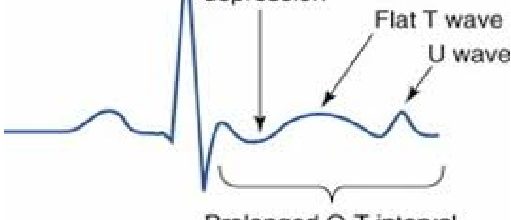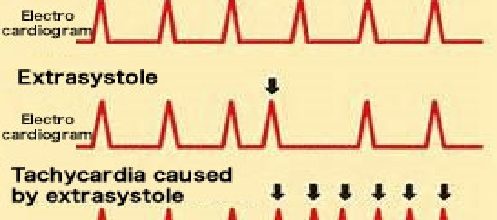Hypokalemia in ECG
Hypokalemia in ECG Hypokalemia, or low blood potassium, is a condition where the amount of potassium in your blood is lower than normal. It’s a common electrolyte disturbance that can be life-threatening if left untreated. Electrocardiogram (ECG) changes associated with hypokalemia includes Flattened T waves A decrease in the amplitude of the T wave is […]






